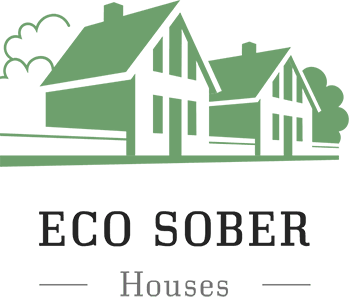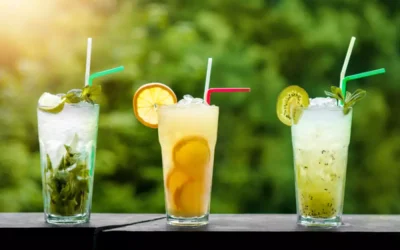Some antibiotics, like Rifadin , carry a risk of liver damage, especially if you already have liver problems. Since drinking heavily can also sober houses in boston damage your liver, it makes sense not to combine the two. Alcohol doesn’t directly interfere with how an antibiotic works to kill bacteria.

Once it arrives, only a small amount of the alcohol is metabolised, while the rest leaves the liver, enters general circulation, and is distributed through the tissues of the body. It’s been a grueling week, but the weekend has arrived, and you’re enjoying an evening out with friends. Before you take a sip, you remember that you’ve been taking an antibiotic. Join our newsletter to be part of a community of people with shared experiences.
Alcoholism: signs, causes, and treatments
Stomach problems, such as nausea, vomiting, diarrhea, and stomach pain can be common with antibiotics, too. It’s a good idea to discuss it with a healthcare provider if you’re not sure whether your medication is safe to take with alcohol. Studies suggest that alcohol makes your body get rid of erythromycin more quickly, so it won’t be as effective at treating your infection. Erythromycin may also slow down your body’s ability to get rid of the alcohol you drink, so it can raise the amount of alcohol in your blood .

It depends on the type of antibiotics you’re taking, your overall health, and your age. You can experience severe side effects when you drink alcohol on these drugs. Any amount of alcohol can cause problems, no matter how small. The side effects include migraines, flushing, vertigo, chest pain, and severe nausea and vomiting.
Problems with drinking alcohol with an infection
This is usually the case with antibiotics such as metronidazole, which has a depressant effect similar to alcohol, or with any antibiotic that causes stomach pain. This can result in major accidents when it hinders coordination, and even simple nausea tends to be quite uncomfortable. While the myth of alcohol and antibiotics might not generally hold true, combining some specific antibiotics with alcohol can be dangerous. While combining alcohol and antibiotics generally won’t render your medication ineffective, it can lead to uncomfortable side effects and weaken your immune system. The human body relies on a specific set of enzymes to break down alcohol.
In response, the person can experience gastrointestinal side effects, such as nausea or diarrhea. Another example is penicillin, which has its own side effects, such as decreased level of consciousness and hallucinations. If mixed with alcoholic drinks, the risk of having these side effects is higher. Some antibiotics are contraindicated with other antibiotics, medications, and supplements . You will likely be prescribed different antibiotics or instructed to stop using certain drugs or supplements.

You must need control or quit drinking alcohol for three days or 72 hours after finishing the process of your medication. It would help if you consult with your doctor and get help to avoid the effects of mixing alcohol-drug interaction. Mixing alcohol and antibiotics can have various adverse effects. Both drugs can affect the body’s metabolism, making them ineffective in fighting infections. Most antibiotics are prescribed for a short time, so waiting to drink alcohol while on these drugs can help reduce the chance of developing an alcohol tolerance and infection. Moreover, avoiding alcohol during treatment can help you heal faster.
Frequently Asked Questions (FAQs)
Drinking alcohol may affect your body’s ability to fight an infection. Therefore, abstaining from alcohol could help your body get much-needed rest to fight an infection. Fortunately, amoxicillin is less likely than other medications to have a severe interaction with alcohol. For the most eco sober house review part, combining alcohol and amoxicillin should not cause any problems as long as you drink in moderation. Another concern is that using alcohol with an antibiotic might increase side effects. For example, many antibiotics have potential side effects like stomach irritation or nausea.
As long as you stick to low to moderate alcohol consumption, you don’t have to worry about serious side effects. This means limiting alcohol intake to two drinks or less per day for men and one drink or less per day for women. For example, you should probably avoid using alcohol while taking the antifungals Nizoral or Gris-PEG , due to risk of liver problems. However, some other antifungals, such as Diflucan , might be able to be used more safely with alcohol. For example, different pharmacies often include conflicting information about the safety of using alcohol with specific antibiotics. Another antibiotic, Zyvox can cause very elevated blood pressure in some people when combined with some kinds of alcohol.
But much of the time, the amount of alcohol is the most important consideration. You are much more likely to have problems with impaired antibiotic effectiveness, slowed healing, or worsened side effects if you drink excessively. To be on the safe side, you may need to avoid alcohol for a few days after stopping such medications. The following lists are adapted from a 2020 review article from the American Society for Microbiology, which analyzed current data on safety on alcohol and antibiotics. It seems helpful to talk to the doctor about your current medications. Are you seeking the best facility where you get a life free of drugs and alcohol?
Drinking alcohol can inhibit those enzymes, which stops them from properly metabolizing the antibiotic so it can do its job. If taking any of these antibiotics, it’s critical to avoid alcohol, not only for the duration of treatment but also, in some cases, for 2-3 days after finishing treatment . This will help ensure the antibiotics are most effective and that you avoid unpleasant and potentially harmful side effects. Many people have wondered, “Can you drink alcohol while taking antibiotics?
- It would be best if you do not drink alcohol while taking some antibiotics, but the doctor who prescribed them will be able to inform you accordingly.
- The side effects include migraines, flushing, vertigo, chest pain, and severe nausea and vomiting.
- Even thoughthey are ineffective against viruses, they can be used to treat bacterial illnesses such as urinary tract infections, skin infections, strep throat, and E.
- You can get help from The Haven rehab facility when you are on medication and want to quit alcohol.
Most people will end up taking antibiotics at some point during their adult lives, which is why we believe it is important to understand them. One of the most common questions that we hear about antibiotics is if it is safe to drink alcohol while taking them. We generally encourage people to talk to their doctor about the specific medication they are taking, but there are some general rules about it that everyone should try to understand. When combined with certain antibiotics, including cephalosporins, metronidazole, sulphonamides, and isoniazid, alcohol consumption can lead to this reaction.
Mixing Alcohol And Antibiotics
All of the information on this page has been reviewed and verified by a certified addiction professional. 10 Ways To Help An Alcoholic Family MemberEven though things may seem helpless, they aren’t. There are many ways that you can help an alcoholic family member. Make your tax-deductible gift and be a part of the cutting-edge research and care that’s changing medicine.
Get health tips, medication info, and pharmacy resources right to your inbox.
Because alcohol affects antibiotics differently, it’s important to talk to your doctor or pharmacist before consuming alcohol while on antibiotics. Keep in mind that antibiotics are often prescribed on a short-term basis. Consider waiting until you’re off the medications to have your next drink.
Antibiotics are commonly used in food-producing animals worldwide. This article explores the potential risks of antibiotics in foods. In many cases, you only need to take antibiotics for a week or two to fully recover from an infection.
Obviously, these effects might be heightened if you have too much to drink. Other potential side effects, like headache or dizziness, might also be worse if you drink alcohol. Patients who took the drug after drinking alcohol developed nausea, vomiting, sweating, flushing, palpitations, headache and a host of other distressing symptoms, and many stopped drinking. Antibiotics and alcohol can get metabolized by the body in different ways. The liver removes antibiotics in the fastest route, while alcohol prioritizes the metabolism of alcohol. In such a situation, mixing antibiotics with alcohol can cause severe effects on the liver, including toxicity.
Consider waiting it out until your medication has run its course before you resume drinking in moderation. You’ll heal better without alcohol, and you might have an easier recovery with fewer antibiotic side effects. Without them, you’re likely to https://sober-house.org/ have a harder time getting better. Binge drinking once while healing from an infection can drop your white blood cell count and set your healing back. The first reason is that if you’re taking antibiotics, you’re probably sick from an infection.





